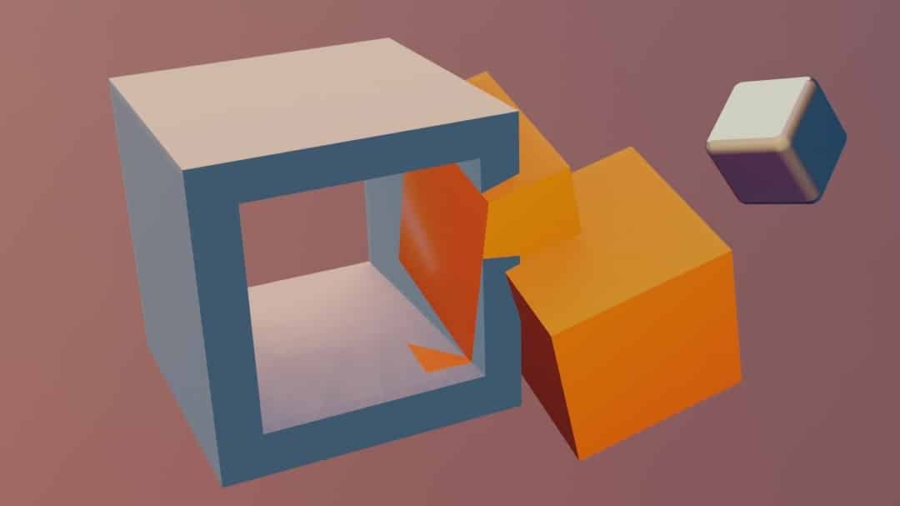Ethereum, since its inception, has been heralded as a revolutionary platform for decentralized applications (dApps) and smart contracts. However, as its popularity surged, so did the challenges associated with scalability. The Ethereum network operates on a proof-of-work consensus mechanism, which, while secure, limits the number of transactions that can be processed simultaneously.
This limitation becomes particularly evident during periods of high demand, where the network can become congested, leading to slower transaction times and increased fees. For instance, during the DeFi boom in 2020, Ethereum’s transaction throughput was severely tested, resulting in gas fees skyrocketing to unprecedented levels. Users found themselves paying exorbitant amounts just to have their transactions prioritized, which raised concerns about the network’s long-term viability.
The scalability issue is not merely a technical hurdle; it poses significant implications for the broader adoption of blockchain technology. As more users flock to the Ethereum network, the existing infrastructure struggles to accommodate the influx. This bottleneck not only frustrates users but also stifles innovation, as developers may hesitate to build on a platform that cannot support their applications effectively.
The Ethereum community has recognized these challenges and is actively seeking solutions to enhance scalability without compromising the core principles of decentralization and security that underpin the network.
Key Takeaways
- The scalability issue with Ethereum is a major concern due to its limited transaction processing capacity.
- Layer 2 solutions are off-chain protocols that aim to improve the scalability and performance of Ethereum by processing transactions outside of the main blockchain.
- Layer 2 solutions can significantly enhance Ethereum’s performance by reducing transaction costs, increasing transaction speed, and improving overall network efficiency.
- Layer 2 solutions play a crucial role in addressing high gas fees on the Ethereum network by offloading transactions to secondary layers, thereby reducing congestion and costs.
- Successful examples of Layer 2 solutions for Ethereum include Optimistic Rollups, zkRollups, and state channels, which have demonstrated significant improvements in scalability and performance.
What Are Layer 2 Solutions?
Layer 2 solutions refer to protocols built on top of a blockchain that aim to improve scalability and efficiency without altering the underlying layer (Layer 1). These solutions leverage various techniques to process transactions off-chain or in a more efficient manner, thereby alleviating congestion on the main blockchain. By doing so, Layer 2 solutions can significantly increase transaction throughput while reducing costs and latency.
Examples of Layer 2 technologies include state channels, sidechains, and rollups, each offering unique advantages and trade-offs. State channels allow participants to conduct multiple transactions off-chain while only recording the final state on the main blockchain. This method is particularly useful for applications requiring frequent interactions, such as gaming or micropayments.
Sidechains operate independently of the main chain but are pegged to it, enabling assets to be transferred between chains while maintaining security. Rollups, on the other hand, bundle multiple transactions into a single one before submitting it to the main chain, thus reducing the data load and improving efficiency. Each of these Layer 2 solutions presents a different approach to addressing Ethereum’s scalability challenges while preserving its decentralized nature.
How Layer 2 Solutions Can Improve Ethereum’s Performance

Layer 2 solutions can dramatically enhance Ethereum’s performance by increasing transaction throughput and reducing latency. For instance, rollups can process thousands of transactions per second by aggregating them into a single batch before sending them to the Ethereum mainnet. This aggregation minimizes the amount of data that needs to be recorded on-chain, allowing for faster confirmation times and lower fees.
As a result, users can enjoy a more seamless experience when interacting with dApps, as they no longer have to contend with long wait times or exorbitant gas prices. Moreover, Layer 2 solutions can facilitate a broader range of applications by making them economically viable. For example, micropayments—transactions involving very small amounts of money—are often impractical on Layer 1 due to high fees.
However, with Layer 2 solutions like state channels or rollups, these transactions can be executed at a fraction of the cost, opening up new possibilities for business models that rely on small-value transactions. This capability could lead to innovative use cases in areas such as content monetization or pay-per-use services, further driving adoption and engagement within the Ethereum ecosystem.
The Role of Layer 2 Solutions in Dealing with High Gas Fees
High gas fees have become one of the most pressing issues for Ethereum users, particularly during peak usage periods. These fees are determined by supply and demand dynamics; when the network is congested, users must bid higher amounts to have their transactions processed promptly. Layer 2 solutions play a crucial role in mitigating these costs by offloading transactions from the main chain.
By processing transactions in bulk or off-chain, these solutions can significantly reduce the overall demand for block space on Ethereum. For example, during periods of high activity, users utilizing Layer 2 solutions may experience gas fees that are orders of magnitude lower than those on Layer 1. This reduction not only makes Ethereum more accessible to everyday users but also encourages developers to create applications that require frequent interactions without worrying about prohibitive costs.
As Layer 2 solutions gain traction and adoption increases, they could help stabilize gas prices over time by distributing transaction loads more evenly across the network.
Examples of Successful Layer 2 Solutions for Ethereum
Several Layer 2 solutions have emerged as frontrunners in addressing Ethereum’s scalability challenges. One notable example is Optimistic Rollups, which allow for significant transaction throughput by assuming that off-chain transactions are valid unless proven otherwise. This approach enables faster processing times while maintaining security through fraud proofs.
Projects like Optimism and Arbitrum have successfully implemented this technology, attracting numerous dApps and users seeking lower fees and faster transactions. Another prominent Layer 2 solution is zk-Rollups, which utilize zero-knowledge proofs to ensure transaction validity while compressing data before submitting it to the main chain. This method not only enhances privacy but also improves scalability by allowing more transactions to be processed simultaneously.
Notable implementations include zkSync and StarkWare, both of which have garnered attention for their innovative approaches and successful integrations with existing Ethereum applications. These examples illustrate how Layer 2 solutions are not just theoretical concepts but practical tools that are already transforming the Ethereum landscape.
The Impact of Layer 2 Solutions on Decentralization

While Layer 2 solutions offer significant benefits in terms of scalability and cost reduction, they also raise important questions about decentralization. The introduction of these solutions can lead to a concentration of power if not designed with decentralization in mind. For instance, if a small number of operators control a significant portion of Layer 2 transactions or if certain protocols become dominant, this could undermine the decentralized ethos that Ethereum champions.
However, many Layer 2 projects are actively working to mitigate these risks by promoting open-source development and community governance models. By ensuring that no single entity has undue control over the network, these projects aim to preserve the decentralized nature of Ethereum while still reaping the benefits of enhanced scalability. Additionally, as more users adopt Layer 2 solutions and contribute to their ecosystems, decentralization can be maintained through increased participation and diversity among stakeholders.
Challenges and Limitations of Layer 2 Solutions
Despite their promise, Layer 2 solutions are not without challenges and limitations. One significant concern is interoperability; as various Layer 2 solutions emerge, ensuring seamless communication between them and the Ethereum mainnet becomes crucial. Without effective interoperability mechanisms, users may find themselves locked into specific ecosystems or face difficulties transferring assets across different Layer 2 platforms.
Another challenge lies in user experience; while Layer 2 solutions can reduce costs and improve speed, they often introduce additional complexity for end-users.
Furthermore, there are ongoing discussions about security trade-offs; while many Layer 2 solutions employ robust mechanisms to ensure transaction validity, they may still be vulnerable to specific attack vectors that could compromise user funds.
The Future of Ethereum with Layer 2 Solutions
The future of Ethereum appears promising with the integration of Layer 2 solutions poised to reshape its landscape significantly. As these technologies mature and gain wider adoption, they will likely play a pivotal role in addressing scalability issues while maintaining Ethereum’s core principles of decentralization and security. The ongoing development within this space suggests that we may see an increasingly vibrant ecosystem where dApps can thrive without being hindered by high fees or slow transaction times.
Moreover, as Ethereum transitions towards a proof-of-stake consensus mechanism with Ethereum 2.0, the synergy between Layer 1 improvements and Layer 2 innovations could create a robust framework for future growth. This evolution may lead to an environment where developers can build complex applications without worrying about underlying infrastructure limitations. Ultimately, as both users and developers embrace these advancements, Ethereum’s potential as a leading platform for decentralized applications will continue to expand, fostering innovation and driving broader adoption across various sectors.
In the rapidly evolving world of blockchain technology, Layer 2 solutions have emerged as a pivotal component for enhancing Ethereum’s scalability and efficiency. These solutions are designed to address the limitations of Ethereum’s mainnet by providing faster transaction speeds and reduced costs, which are essential for the network’s future growth and adoption. For those interested in the technological advancements that complement Ethereum’s development, exploring the hardware that supports such innovations can be insightful. For instance, high-performance laptops are crucial for developers working on complex blockchain projects. You can learn more about the best options available by reading this article on the best laptops for video and photo editing, which highlights devices that offer the power and efficiency needed for demanding tasks.
FAQs
What are Layer 2 solutions for Ethereum?
Layer 2 solutions for Ethereum are protocols and technologies built on top of the Ethereum blockchain to improve its scalability and performance. These solutions aim to process transactions and smart contracts off-chain, reducing the burden on the main Ethereum network.
Why are Layer 2 solutions critical for Ethereum’s future?
Layer 2 solutions are critical for Ethereum’s future because they address the network’s scalability issues. As Ethereum continues to grow in popularity, its current infrastructure struggles to handle the increasing number of transactions and smart contracts. Layer 2 solutions offer a way to alleviate these scalability concerns and improve the overall user experience.
What are the benefits of Layer 2 solutions for Ethereum?
The benefits of Layer 2 solutions for Ethereum include improved scalability, reduced transaction costs, faster transaction processing times, and enhanced overall network performance. These solutions also enable developers to build more complex and interactive decentralized applications (dApps) without being limited by the constraints of the main Ethereum network.
How do Layer 2 solutions work with the Ethereum blockchain?
Layer 2 solutions work with the Ethereum blockchain by leveraging off-chain processes to handle transactions and smart contracts. These off-chain processes are then periodically settled on the main Ethereum network, reducing the network congestion and improving overall efficiency.
What are some examples of Layer 2 solutions for Ethereum?
Examples of Layer 2 solutions for Ethereum include state channels, sidechains, plasma chains, and rollups. Each of these solutions offers a unique approach to improving Ethereum’s scalability and performance, and they are actively being developed and implemented within the Ethereum ecosystem.

